The first material used to protect wooden furniture and musical instruments was shellac. In addition to protection, it gave furniture that warm sheen that we now only see on old objects. The application was laborious and took a long time and many successive coats, but it produced a beautiful surface with a deep sheen. However, in spite of the beauty, the strength of the film was not very good, which in time led to its replacement by new, modern materials, preferred for their increased strengths and speed of working. As a result, old application techniques have been lost, with fewer and fewer people knowing how to protect wood in the past. But I believe that shellac is an important part of wood finishing and that's why I want to tell you more about it.
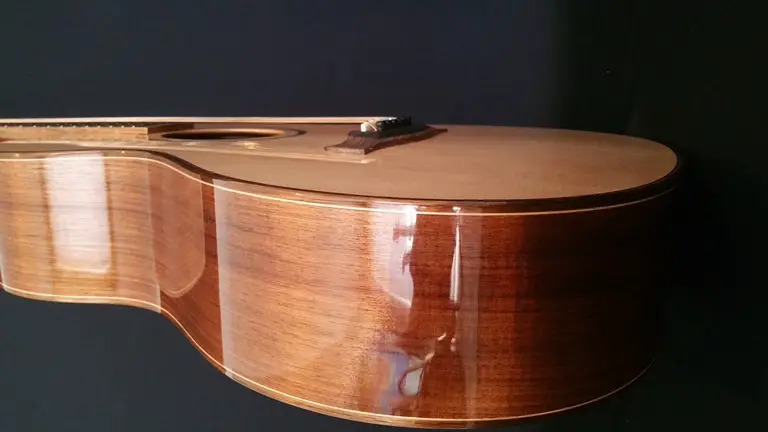
Shellac was the first material used to coat furniture and stringed musical instruments. It seems to have been first used by the Venetians in the 16th century. It was at this time that a new trade emerged - furniture dyer. The painter was neither a painter nor a furniture maker. He only varnished furniture with shellac using a technique known today as French polish.
In the 18th century shellac was widely used in Victorian England to coat furniture made of expensive wood brought from the colonies. The heyday lasted until the 19th century, when oil and wax finishes appeared. However, expensive furniture continued to be made with shellac. In the early 20th century (1920-1930) it was almost completely replaced by nitrocellulose varnish, which was very similar in appearance but could be sprayed on and polished easily.
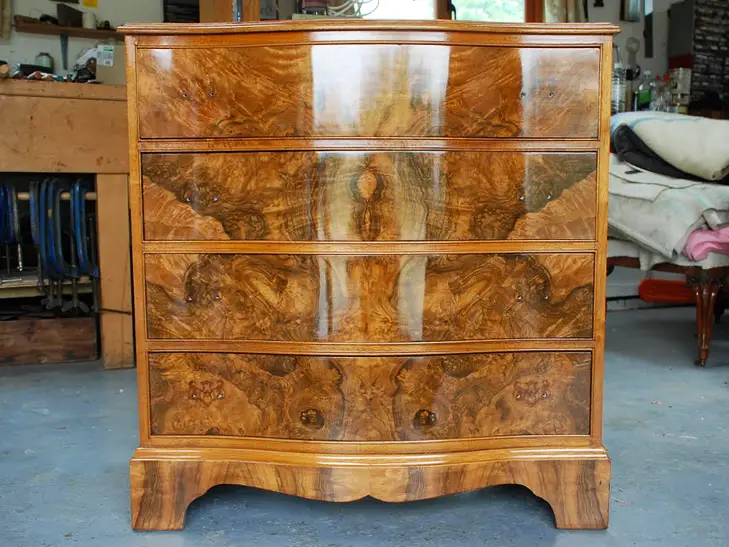
Shellac is a resin secreted by the female of a lac beetle (Keria lacca) that lives on trees in the forests of India and Thailand. The beetle feeds on the tree's sap and deposits the resin on its branches, making a tunnel.
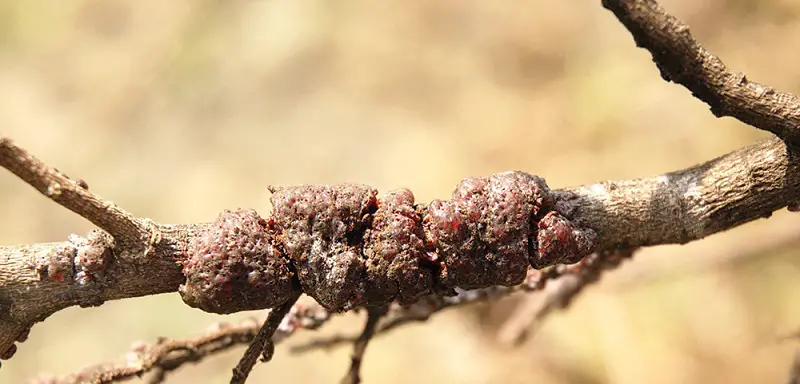
The color of the resin is different depending on the type of tree and the time of year it is secreted. It can range from straw yellow to dark brown, orange, red or light brown. As a curiosity, it is said that it takes 100,000 to 300,000 insects to make one kilogram of varnish.
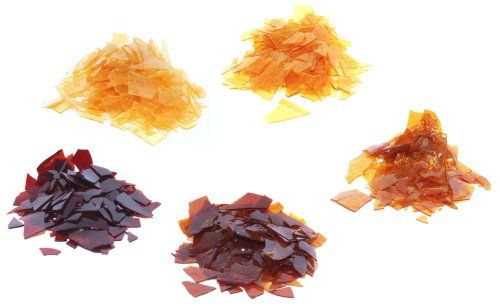
When the resin is collected from the branches, pieces of bark and even insects are taken. Everything is put in a cloth tube like a stocking and heated. The resin is melted and drained off, the remains remain in the stocking. The liquid is then poured into the thin film and left to harden. At the end the thin film is broken up into shellac flakes.
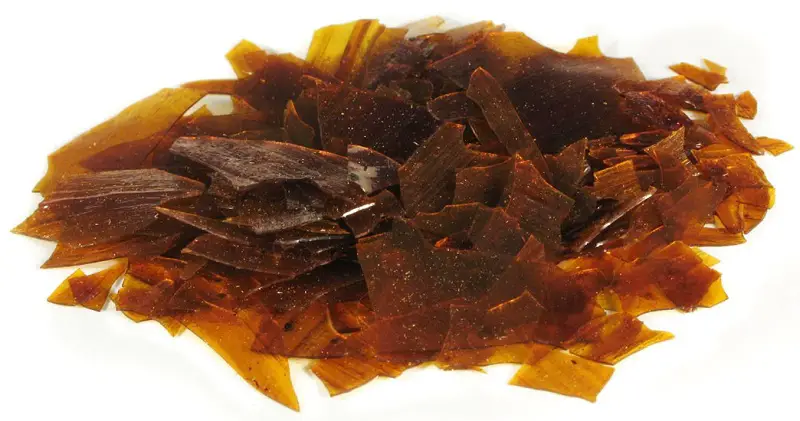
There's also the shellac 'buttons' version, but that's just the way the resin has been molded.
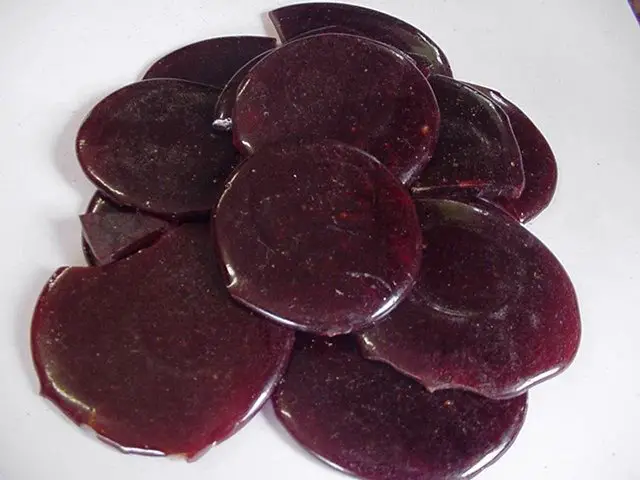
The varnish is obtained by dissolving resin in industrial alcohol (denatured spirit). The prepared varnish does not last very long, which is why shellac is sold in solid form. If it is prepared, it should be kept in a cool place as high temperatures accelerate deterioration. If the prepared shellac has been standing for a longer period of time, it is a good idea to check it before use. Pour a few drops and if they harden immediately the varnish is good. If they remain sticky it cannot be used. When you decide to buy ready-made varnish always check the date of manufacture and the guarantee. These must be on the label. If they are not, do not buy the product.
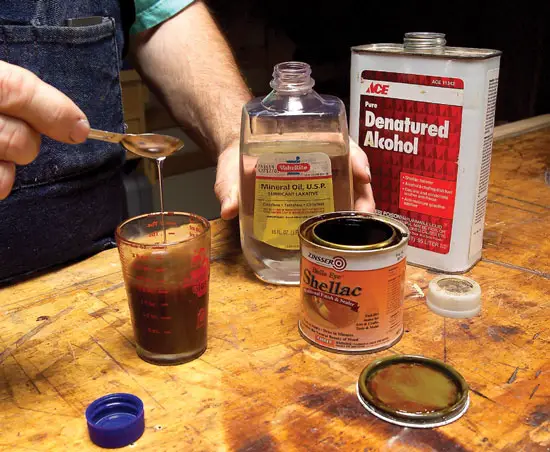
The varnish naturally contains 3-5% insect wax. There is also a wax-free, purified (dewaxed) version for finishes where the shellac is to be covered with another coat of varnish of a different nature or where the applied coats are thicker. If finishing with shellac only, unpurified shellac may be used. The wax version turns whitish when dissolved in alcohol, but becomes transparent when dry.
The resin secreted by Keria Lacca is not only used for furniture varnish. In the food industry, it is used to polish candy and other foods, and in combination with wax to protect fruit transported over long distances (citrus fruit). In the past, it was used to insulate electrical wires against damp or to make gramophone and patephone sheets, but was replaced with the advent of vinyl.
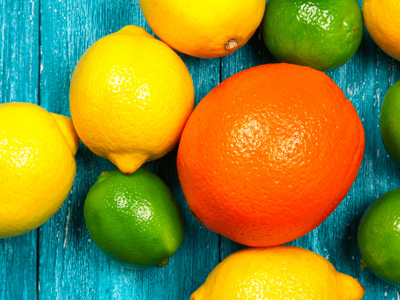
Shellac protects the wood, blocks tannins and odor inside, is UV resistant and does not fade over time like other varnishes. When dry it has a natural high gloss and silica is added to smooth it. The varnished surface is sensitive to water and alcohol, turning whitish, and is not very resistant to high temperatures, softening if a cup of hot liquid is placed on it. Defects are easily repaired by simply applying varnish to the damaged area. The added varnish blends in perfectly and the defect disappears.
The method of applying shellac is called French polish. It consists of applying many successive thin coats of varnish in continuous, circular movements. As there is much to say about the method, I will continue with a detailed description of how how to get that unique sheen.


































Good evening!
I would like to buy shellac :))), but I don't know where I could purchase it.
If you have the good will to help me, thank you from the bottom of my heart.
A wonderful evening!
Good evening.
You can buy on the net, there are several companies selling. Search for "sellac flakes" or "serlac flakes".
All the best.
Hello! I want to paint a violin. But I don't want that high gloss, what should I do ? Before painting, should the wood be treated ? Thank you
Hello!
If you paint with shellac, you don't have to polish it. If you use nitrocellulose varnish or other types of varnish (nitro is more suitable for violins), use low gloss varnish. Depending on the gloss, there are very matt (0-10 gloss), matt (15-35 gloss), semi-matt (40-60 gloss), glossy (65-90 gloss) and high gloss or mirror gloss (>90 gloss) varnishes.
Before varnishing the wood should be sanded (last grain 180-220) and wet sanded (only if you want to stain the wood. If the wood is tannic (mahogany) use an insulator as a first coat. The insulator should be applied in a thin layer so that it does not form a film. If you use shellac, there is no need for an insulator. Shellac insulates quite well and is also used for blocking resin in knots.
All the best!
Good evening! I want you to help me and tell me what resins I need to get the lacquer with which to lacquer musical instruments, and how to prepare it. Thank you!
Hello!
Musical instruments are finished in different ways. If you are referring to the shellac finish, usually used for violins or classical guitars, you have the method and recipe for making varnish in the link below. Shellac flakes can be found in shops selling varnishes and paints, in artists' paint shops or on the net.
In factories, methods of finishing tools are more modern. For violins, nitrocellulose varnish is generally used because it is more elastic and less rigid. For guitars, polyurethane or water-based varnishes are used. Sometimes, for high gloss guitars, polyester varnish is used. However, because of the hazards and risks (explosions can occur if the accelerator comes into direct contact with the catalyst) it is used less and less.
All the best!
https://revistadinlemn.ro/2017/08/18/french-polish-metoda-clasica-de-aplicare-a-shellac-ului/